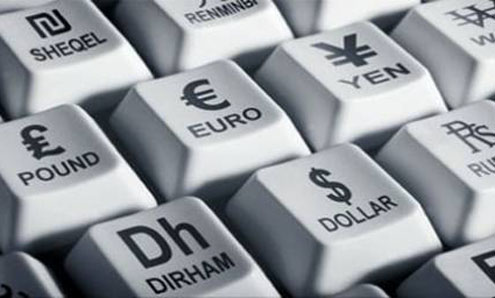 NEW YORK: What’s the difference between an ostrich and a Wall Street analyst? An ostrich occasionally takes its head out of the sand.Despite a flurry of signs that the economy is slowing, stock analysts — nearly every single one — have remained bullish on stocks. Greece may be hurtling toward default, the U.S. unemployment rate remains high, and house prices are still declining. But the hundreds of pros paid to tell us when to buy and sell stocks have barely touched their call for fast growth in corporate sales and profits for the next several quarters.There’s a lot of optimism here,” says Howard Silverblatt, chief index analyst at Standard & Poor’s. “They’re predicting the second half of the year will be the best ever for profits. Do you feel that way?”Of course, no one can predict with certainty whether the economy will slow to a crawl or even fall into another recession. But what’s startling is the near unanimity among these prognosticators. They believe that the economy won’t get much worse and say we’d be foolish to sell stocks despite a near-doubling in prices in the past two years.Among the 9,015 analyst recommendations on S&P 500 stocks available today, only 300 are to sell, or 3.3 percent, according to data provider FactSet. That’s the same proportion from a month earlier when the economy was considered to be in better shape. All else being equal, you want to sell if you think profit growth could slow.
NEW YORK: What’s the difference between an ostrich and a Wall Street analyst? An ostrich occasionally takes its head out of the sand.Despite a flurry of signs that the economy is slowing, stock analysts — nearly every single one — have remained bullish on stocks. Greece may be hurtling toward default, the U.S. unemployment rate remains high, and house prices are still declining. But the hundreds of pros paid to tell us when to buy and sell stocks have barely touched their call for fast growth in corporate sales and profits for the next several quarters.There’s a lot of optimism here,” says Howard Silverblatt, chief index analyst at Standard & Poor’s. “They’re predicting the second half of the year will be the best ever for profits. Do you feel that way?”Of course, no one can predict with certainty whether the economy will slow to a crawl or even fall into another recession. But what’s startling is the near unanimity among these prognosticators. They believe that the economy won’t get much worse and say we’d be foolish to sell stocks despite a near-doubling in prices in the past two years.Among the 9,015 analyst recommendations on S&P 500 stocks available today, only 300 are to sell, or 3.3 percent, according to data provider FactSet. That’s the same proportion from a month earlier when the economy was considered to be in better shape. All else being equal, you want to sell if you think profit growth could slow.
Analysts work for banks, brokerages and research firms. To form their opinions on stocks, they pore over the financials of companies, visit their offices and factories and grill their executives. Then they churn out voluminous reports backing those opinions. Those are widely read — even by professional investors who like to poke fun at their relentless bullishness.Some analyst predictions that might make you scratch your head:• Profits will leap in the second quarter. For April through June, analysts expect that companies in the S&P 500 index will post $23.90 in operating profits per share, four pennies less than their estimate at the end of May, according to an S&P survey. If that happens, companies will earn 15 percent more than in last year’s second quarter.• Record profits next quarter. For the three months ending Sept. 30, S&P says analysts see operating profits hitting $25.09 per share. That would be a higher than any quarter yet, beating results from the second quarter of 2007. Back then the economy was growing twice as fast and the unemployment rate was half what it is today.
A blockbuster year, followed by another. For all four quarters of 2011, analysts estimate that S&P 500 profits will hit a record $97.86 per share, surpassing by $10 the previous record for any year, set in 2006. Then, they insist, profits will jump another 14 percent to $111.82 per share in 2012.S&P’s Silverblatt thinks many analysts will eventually lower their estimates. He notes that most prefer to wait for corporate executives to hint that they should cut estimates before doing it. But many companies appear to be waiting until they announce second quarter earnings to guide estimates down. That won’t be until at least mid-July.Nicholas Colas, chief market strategist at broker ConvergEx Group, says the upcoming reporting season will be the most important since the Great Recession ended eight quarters ago. If companies suggest that estimates are too high, earnings revisions will fly, he believes.
For the average investor, that could mean danger ahead. Stocks already have fallen nearly 7 percent since their April peak. That’s not far from the 10 percent mark that signals a correction. Suddenly gloomy analysts could push it the rest of the way.One stock to watch: Apple Inc. The i-everything maker is expected to report in mid-July. The stock could fall if the economy continues to slow and consumers cut spending on its products. Apple products are generally considered recession-proof. Still, after a stock climb of 22 percent in the past year, you’d think there’d be a few doubters about its ability to rise further. Not exactly. Among the 45 analysts covering the company, only one is suggesting you sell, according to FactSet. If Apple’s revenue or profits come in low, not only would that make analysts look flatfooted, it could spread jitters among investors. That, in turn, could pull other stocks down.The uniform optimism among analysts might be laughable if it didn’t matter so much. When ordinary investors hear bullish TV pundits talking about how stocks are “reasonably valued,” those investors are being swayed by analysts even if they’ve never read their reports. Pundits who talk this way are often referring to the so-called price-earnings ratio, a figure they get from analyst estimates of a company’s earnings. That P/E ratio for the S&P 500 currently stands at 12.9 times estimated operating earnings for the coming year — cheap compared with the long-term value of 15 or 16 times.
The problem is, that 12.9 ratio could be wrong. If earnings come in lower than expected, the P/E ratio for the S&P 500 will shoot up. Stocks would no longer seem “reasonably valued” and might fall sharply. This scenario has happened before.In June 2007, near the end of a five-year bull market, stocks were trading at 16 times estimated operating earnings for the next 12 months. But the estimates turned out to be too high as the economy slowed and then dropped into recession. In fact, stocks were trading at 22 times the operating earnings that companies delivered over those 12 months. As those lower earnings came in, stocks fell 15 percent over the next year while the analysts played catch-up.Now analysts want you to believe that nearly every stock should be bought.
After the dot-com bust, politicians and prosecutors thought the reason analysts got it wrong was sinister. They noted that analysts working for the research arms of a bank are reluctant to criticize a company that the banks are courting as a client for other parts of their business. But the real cause may be more difficult to root out because it’s so human: self-delusion.”You’re married to an industry, and you want to feel that what you’re following is special — that it can buck the trend,” says ConvergEx strategist Colas, who was an auto industry analyst for nine years and admits he fell into that trap. “You want to feel the companies are run by smart people and the fundamentals are good.”To be fair, analysts have been right in their optimism in the recovery so far. Investors who followed their advice and bought stocks last summer amid somber economic news have been rewarded. This fits a pattern, according to a recent McKinsey & Co. report that otherwise lambasted analysts for overestimating earnings growth by nearly double, on average. During economic recoveries when recession-depressed stocks are most likely to rise, analysts look like geniuses. If you’re counting, that’s four times over the past 30 years. – Yahoonews












